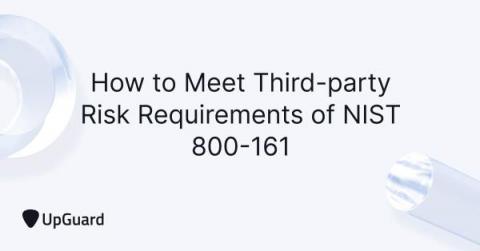Security | Threat Detection | Cyberattacks | DevSecOps | Compliance
Risk Management
SEC's Push for Better Cyber Governance
Water Sector Cybersecurity Requirements
Water Sector Cybersecurity Requirements Policymakers and regulators in Washington are bringing their attention now to water utilities’ cybersecurity. Last month, the White House announced it was expanding its public-private cybersecurity partnership to the water sector. Separately, in December of 2021, the Environmental Protection Agency (EPA) announced an evaluation of regulations related to the public water system’s cybersecurity, which will change in April.
5 Cyber Hygiene Best Practices
What's new in UpGuard // Cyber Vendor Risk Management Product Releases
Navigating a Heightened Cyber Threat Environment
Cyber risk has never been completely independent of world politics and international affairs, but in recent weeks, there has been a significant shift in alignment. The domain of physical war has closer ties to the digital sphere than ever before. As part of efforts to manage elevated cyber risk, it is vital to understand the short-term impact and longer-term risk of current events, and where focus should be placed to achieve the best defense.
What's new in UpGuard // Cyber Vendor Risk Management Product Releases
Scary kids scaring kids: An update on the arrest of Lapsus$ group members
One would be hard pressed to find anyone working today in the cybersecurity world that has not yet heard of Lapsus$, an emerging cyber-crime group with big claims of breaching the likes of high-profile companies Microsoft, Samsung, NVIDIA, and Okta amongst others.
How to Meet Third-party Risk Requirements of NIST 800-161
The National Institute of Standards and Technology (NIST) has produced several publications addressing the different components of information technology security within the NIST 800 computer security series. Compliance across this entire NIST 800 series is expected for all internal and external service providers of government entities - such as the DoD federal agencies.
5 Ways to Illuminate Your Attack Surface Blind Spots
How well do you know your organization’s attack surface? Chances are, you don’t know it as well as you think you do. According to a recent report, 2 out of 3 organizations say their external attack surface has expanded in the past 12 months, but that does not mean they’ve been keeping track of it.










